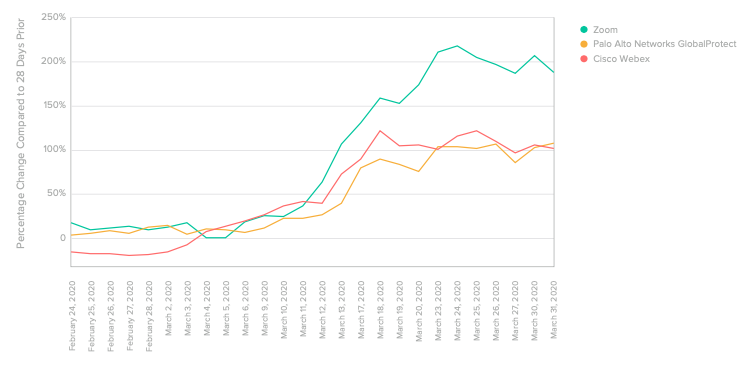Businesses @ Work (from Home): The Healthcare Edition
The COVID-19 pandemic has created unprecedented challenges for people around the world, with millions suddenly working from home for the very first time. This, in turn, means thousands of companies have had to adapt—quickly—to maintain productivity and security for employees, allowing them to easily connect and communicate with colleagues.
Within the healthcare industry, clinics and hospitals are facing particularly unique circumstances, as workers and administrators rush to the front lines. At the same time, other healthcare professionals—including those in pharmaceuticals, insurance, and manufacturing—have had to adjust to working at home and being separated from patients and providers. This shift has led to a greater need for access to on-premises systems and records, as well as telemedicine.
Today’s challenges have inspired us to create a mid-year update to Businesses @ Work, to examine specifically how organizations across industries are employing new apps and using existing tools to improve productive and secure remote workforces. Representing a subset of this data, our healthcare-focused report reveals just how healthcare providers and corporate end-users are responding—and points out the tools they’re using to continue providing high-quality care.
Productivity tools boom across industries
Across the Okta Integration Network (OIN)—which is made up of nearly 8,000 customers and over 6,500 integrations with cloud, mobile, web apps, and IT infrastructure providers—the number of apps our customers deploy typically grows steadily each month.
However, in March 2020, we saw a substantial increase in unique users across various workplace apps, as employees in various industries adjusted to the unusual conditions brought about by COVID-19. Video conferencing apps saw the biggest increase, with Zoom usage growing by 110%, but network security and performance tools also surged:
- PaloAlto Networks Global Protect: 94%
- Cisco AnyConnect: 86%
- Citrix ADC: 56%
- Cisco Webex: 37%
Healthcare professionals embrace remote work
These same trends are noticeable across the healthcare sector. Usage in this industry, like many others, changed drastically when physical distancing policies were put in place. In fact, logins jumped across our network shortly after Europe announced a lockdown and non-essential businesses across the U.S. closed their doors.
In particular, the use of video conferencing tools peaked as healthcare providers shifted to virtual appointments and online meetings. The industry saw a 103% increase in Zoom usage alone over the previous month. Cisco WebEx also saw a surge in unique users across the healthcare sector, increasing by 46%.
In addition, healthcare organizations have relied more heavily on Palo Alto Networks GlobalProtect and Citrix ADC during this time. Usage of these network security and application performance tools increased by 52% and 49%, respectively. Both help to secure mission-critical apps from attacks, which is more vital than ever as clinic and hospital staff work from new, remote locations.
Many healthcare professionals have also turned to ServiceNow, which saw an 18% growth in unique users in March. Shifting to a remote work environment can be stressful under the best of circumstances—this tool’s ability to alleviate help desks has been vital as physicians and other industry workers learn to assist patients and communicate with colleagues from home.
Envision transforms their approach to healthcare
Like organizations across industries, Envision Healthcare was significantly impacted by regulations stemming from COVID-19—but was determined to continue to deliver excellent levels of care while keeping their patients and their clinicians safe. In five short days, Envision transformed the way they operated by establishing a telehealth system that allows clinicians to attend to their patients virtually, and has already conducted thousands of virtual visits. In this way, Envision is not only helping to save lives during the pandemic with its 11,000 emergency clinicians and 675 emergency departments, it’s also helping to pioneer a new model of healthcare delivery.
The healthcare industry is under more pressure than most in these unprecedented times. However, the trends we see in our research show that companies can quickly respond and adapt during times of crisis. As the situation develops it’s vital for healthcare organizations to continue utilizing tools that enable their employees to communicate and collaborate easily, quickly, and securely.
For more information on how healthcare organizations are using technology to respond to the COVID-19 pandemic read our Healthcare Businesses @ Work (from Home) report.


